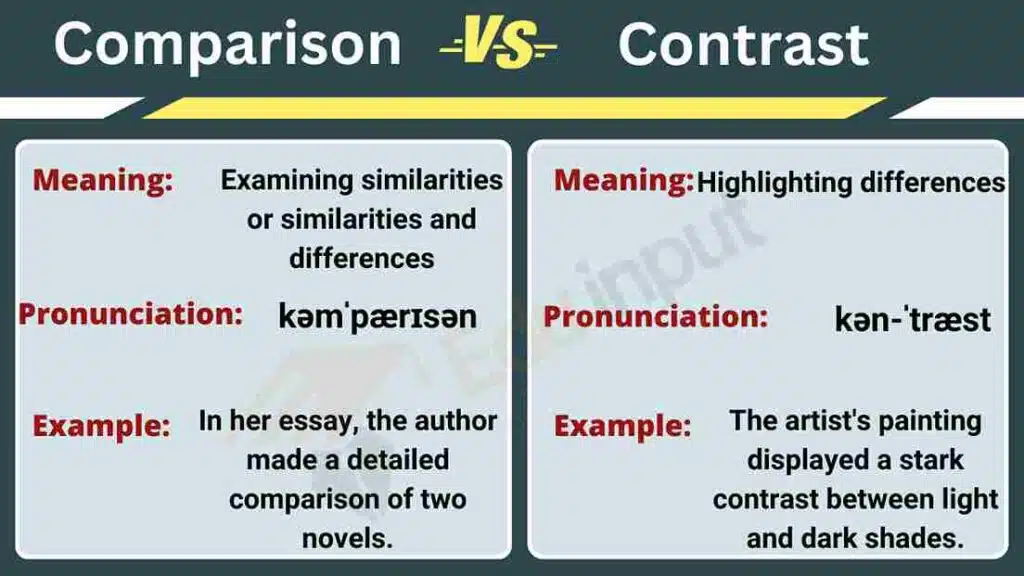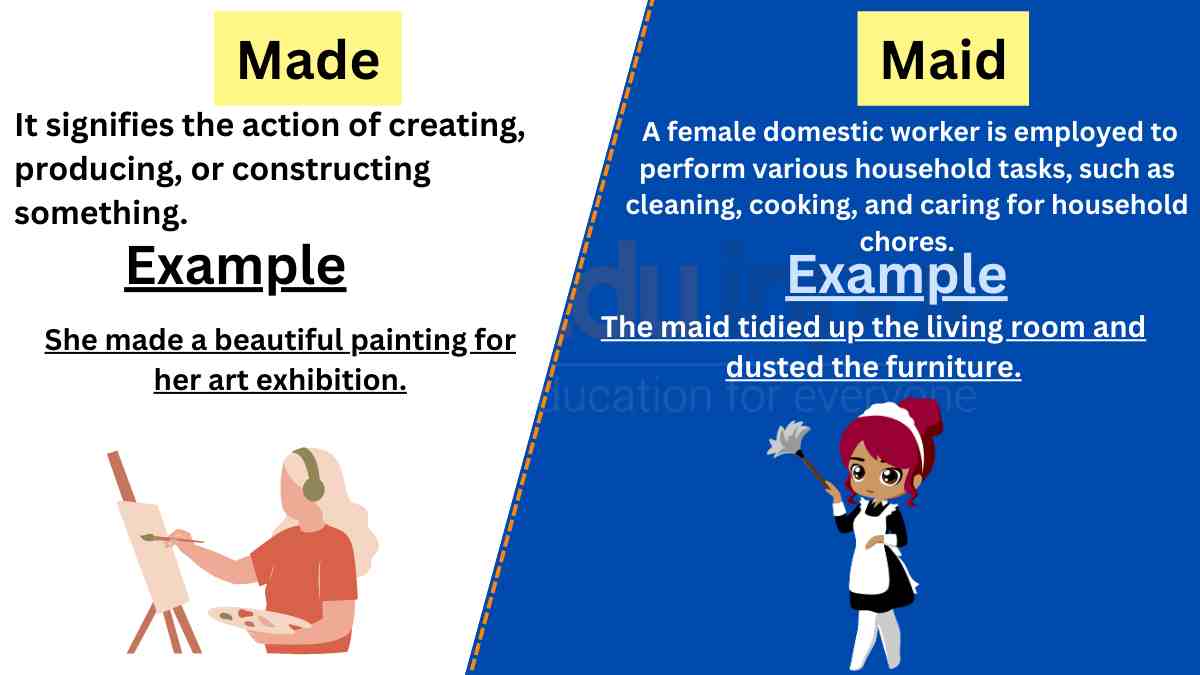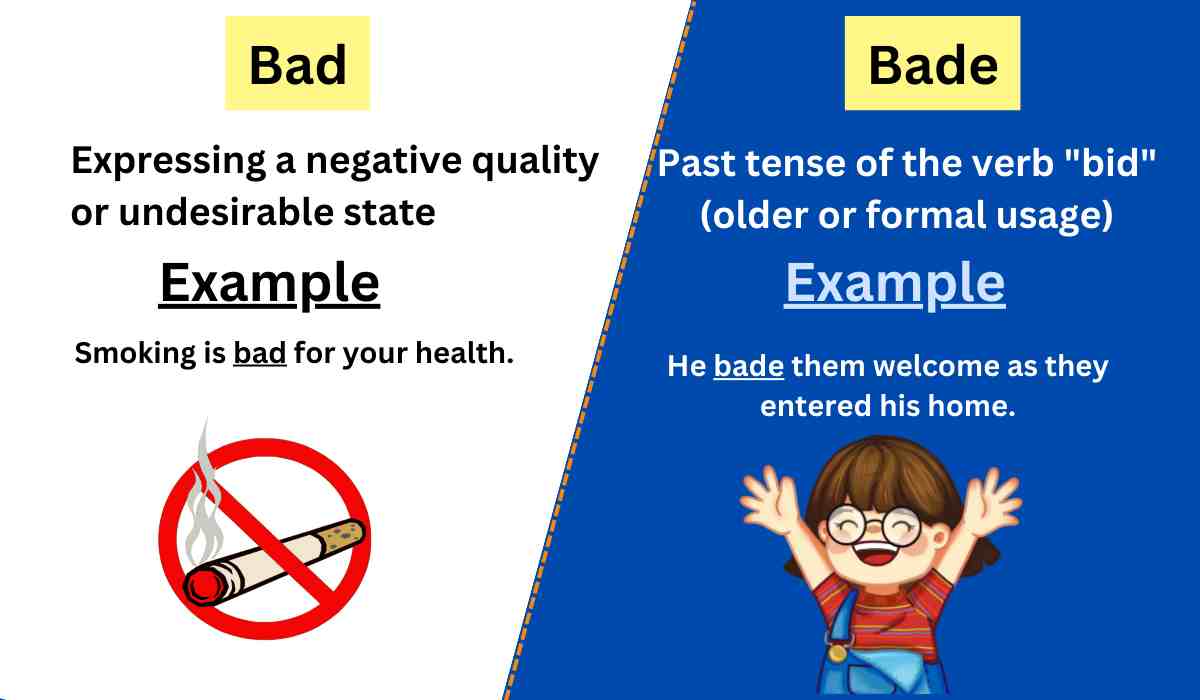Comparison and Contrast- Meaning, Real-Life Uses and Practice Exercises
Comparing is recognizing similarities and/or differences while contrasting entails comparing two or more objects or events to highlight their distinctions. These processes enable us to discern the nuances and intricacies that shape our world, unveiling the beauty in both uniformity and diversity.

When analyzing information or discussing topics, it is important to distinguish between comparison and contrast. Although these terms are often used together, they have distinct meanings and purposes.
In this article, we will explore the differences between “comparison” and “contrast” to gain a deeper understanding of their definitions and usage. By understanding how comparison emphasizes similarities and contrast highlights differences, we can effectively communicate and employ these concepts in various contexts.
What Is Comparison?
Definition:
Comparison involves identifying similarities or both similarities and differences between two or more objects, ideas, or events.
Examples of Comparison
- The author made a detailed comparison of two novels, examining themes and characters.
- A report compared the performance of two marketing campaigns based on reach and ROI.
- The researcher compared smartphone features like camera quality, battery life, and screen resolution.
- A history class discussed similarities between revolutions in France and America.
What Is Contrast?
Definition
Contrast is the act of identifying and emphasizing differences or dissimilarities between two or more subjects.
Contrast Examples
- The speaker contrasted remote work with office work, focusing on productivity and mental health.
- The film highlighted the contrast between two sisters — one ambitious, the other content.
- A science lesson contrasted renewable and non-renewable energy sources.
- Marketing experts often contrast brand positioning strategies to assess effectiveness.
Difference Between Comparison and Contrast
The grammatical differences between comparison and contrast are given below:
| Criteria | Comparison | Contrast |
|---|---|---|
| Meaning | Finding similarities or both similarities and differences | Highlighting differences only |
| Focus | Common traits or shared aspects | Dissimilar traits or opposing features |
| Purpose | To connect ideas or show relationships | To distinguish, clarify, or make decisions |
| Use Cases | Academic analysis, product reviews, literary essays | Arguments, differentiation, critical evaluation |
| Pronunciation | /kəmˈpærɪsən/ | /kənˈtræst/ |
How Are Comparison and Contrast Used in Paragraphs?
In writing, comparison and contrast guide structure and clarity. They allow the author to highlight either similarities, differences, or both, depending on the goal.
“Like the interplay of light and shadow, comparison reveals common ground, while contrast sharpens distinctions. Together, they help us understand more deeply.”
Real-World Applications of Comparison and Contrast
We use comparison and contrast in many everyday situations—not just in school. Here are some common examples –
- School – Students compare books, time periods in history, or science ideas to understand them better.
- Work and Business – Companies compare products, prices, or customer groups to decide what works best.
- Everyday Choices – We compare things like job offers, places to live, or vacation spots before making decisions.
- Thinking Skills – Comparing and contrasting helps us see both sides of an issue and make better choices in arguments or debates.
Common Mistakes to Avoid
When writing a comparison and contrast, watch out for these mistakes –
- Only Focusing on One Side – Make sure you talk about both subjects equally.
- Not Saying What You’re Comparing – Always say what features or ideas you’re looking at (like size, cost, or benefits).
- No Linking Words – Use words like “both,” “however,” or “in contrast” to make your writing easier to follow.
Tip – Draw a Venn diagram before writing to clearly see what’s the same and what’s different.
Practice Exercises for Comparison and Contrast
Use these short exercises to practice comparing and contrasting.
Exercise 1:
Compare dogs and cats.
Think about how they act, how much care they need, and how they bond with people.
Sample Answer:
“Dogs and cats are both popular pets. Dogs are usually more friendly and need lots of attention. Cats are more independent and don’t need as much care.”
Exercise 2:
Compare buses and trains.
Think about how fast they are, how comfortable, and how much they cost.
Exercise 3:
Write about how online learning is different from in-person learning.
Talk about things like the classroom, how students join in, and the schedule.
FAQS
What is the difference between comparison and contrast?
Comparison shows similarities (and optionally, differences); contrast shows only the differences.
Can a comparison include differences?
Yes. While comparison focuses on similarities, it can also acknowledge differences.
Why are comparison and contrast important?
They promote analytical thinking, support clearer communication, and help decision-making.
What are some examples of contrast in writing?
Literary themes (love vs. hate), technologies (AI vs. human labor), ideologies (capitalism vs. socialism).
What are the benefits of comparison and contrast?
They help you understand topics better, make decisions, and improve critical thinking.
How to avoid common mistakes in compare and contrast writing?
Balance both topics, use clear criteria, add transition words, and plan your points.
What are the steps for structuring a comparison?
Choose two topics
List similarities and/or differences
Write a clear thesis
Pick block or point-by-point format
Use transitions
Conclude clearly







Leave a Reply